The use of the word “mindfulness” is increasing, but what exactly is mindfulness, and how can children benefit from the practice? To find out more, I spoke with Wynne Kinder, author of Calm: Mindfulness For Kids.
What is Mindfulness?
“One definition might be: paying attention to the present moment with openness and compassion. Another is single-tasking. Yet another: What emerges when we attend to the present moment in a particular way.”
“Most approaches to being mindful, or practicing it, include purposeful mindful practices that train attention. To select, direct, and sustain focus.”
“Awareness can be enhanced, especially when the target of attention is on oneself, one’s thoughts, emotions, sensations in the body, breath, and other sensory input.”
Can Children Practice Mindfulness?
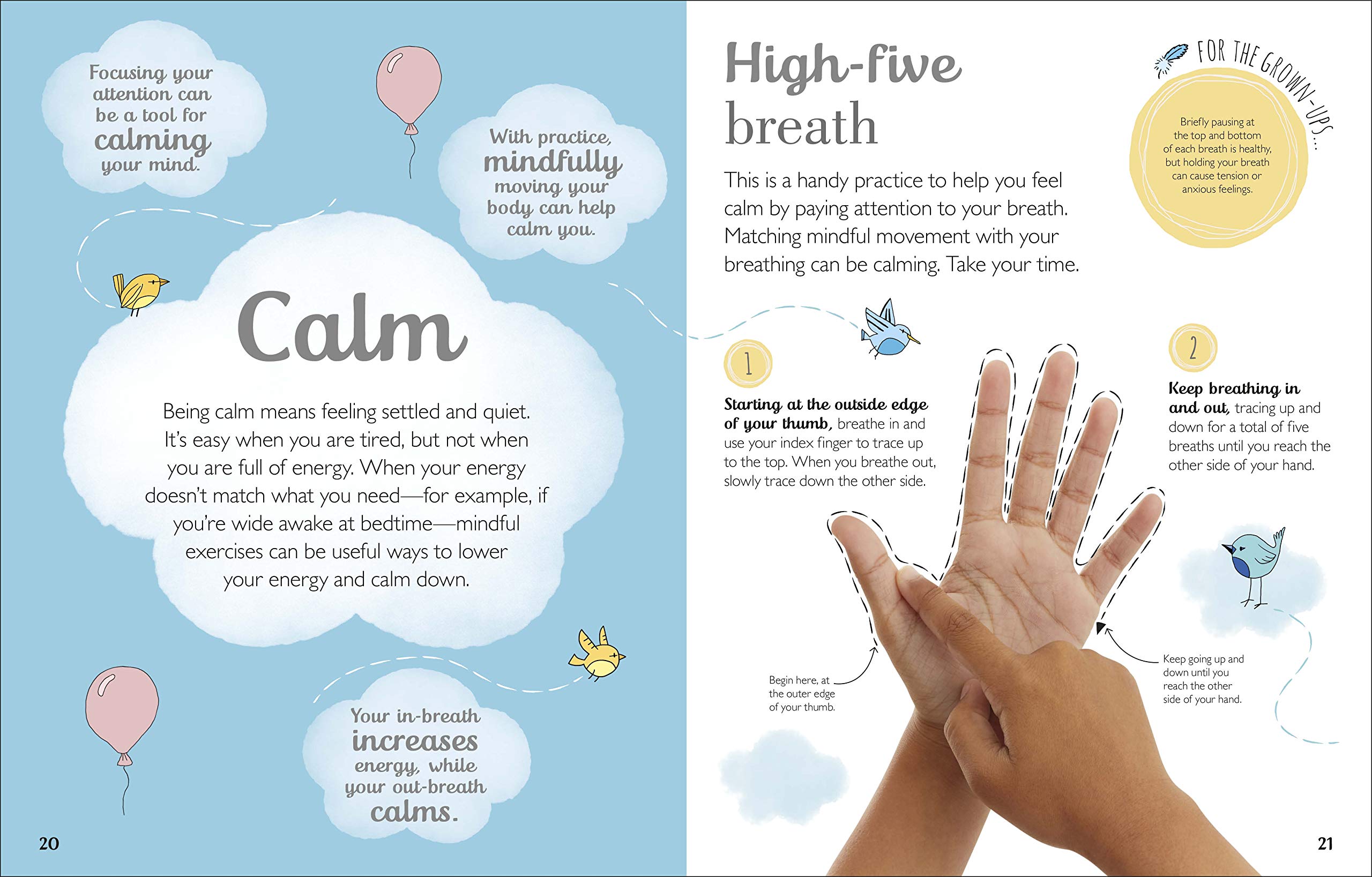
Children can practice mindfulness, and in many cases, they learn to do so more quickly than adults. This is, perhaps, because children make fewer value judgments than adults.
Research shows that school-based mindfulness programs significantly reduce levels of aggression and social anxiety in elementary school children. As the developer and lead instructor of Wellness Works, a mindfulness program for children delivered in schools, this is something Kinder has seen in practice.
“Consistent mindful practices in the classroom can lead to changes in self-awareness, self-care, emotion regulation, concentration, and mental flexibility, which can all enhance performance in school and out.”
Do Children Need Adults To Help Them Practice Mindfulness?
Kinder recently wrote Calm Mindfulness For Kids, and I asked if parental participation was meaningful.
“This is intended to be kid-facing.” Kinder told me, “And I am thrilled to hear, “Our son only shows us his Calm book when he has trouble reading the instructions; he is six.”
Some of the activities in the book direct kids to ask an adult for help, but they will only need a hand for practical, safety reasons. The flashcard below is a good example. It tells kids to ask an adult to help cut a hole in the bottom of a cup.
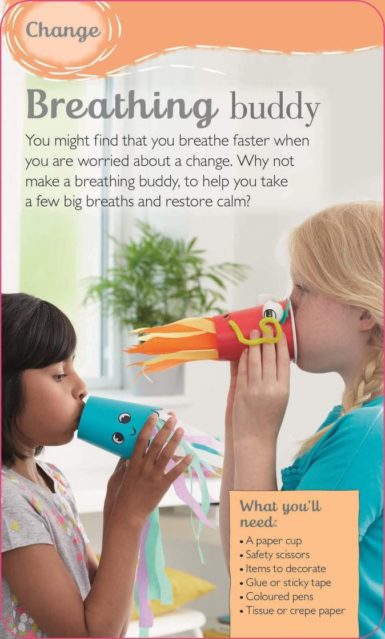
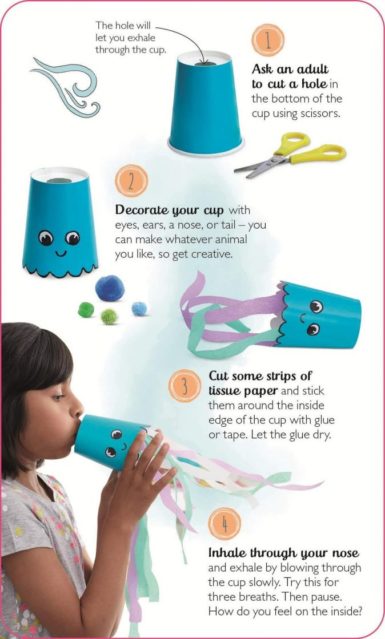
Dorling Kindersley sent us a copy of Calm: Mindfulness For Kids to review. We also received a Calm: Mindfulness For Kids flashcard set.
Review: Calm: Mindfulness For Kids by Wynne Kinder
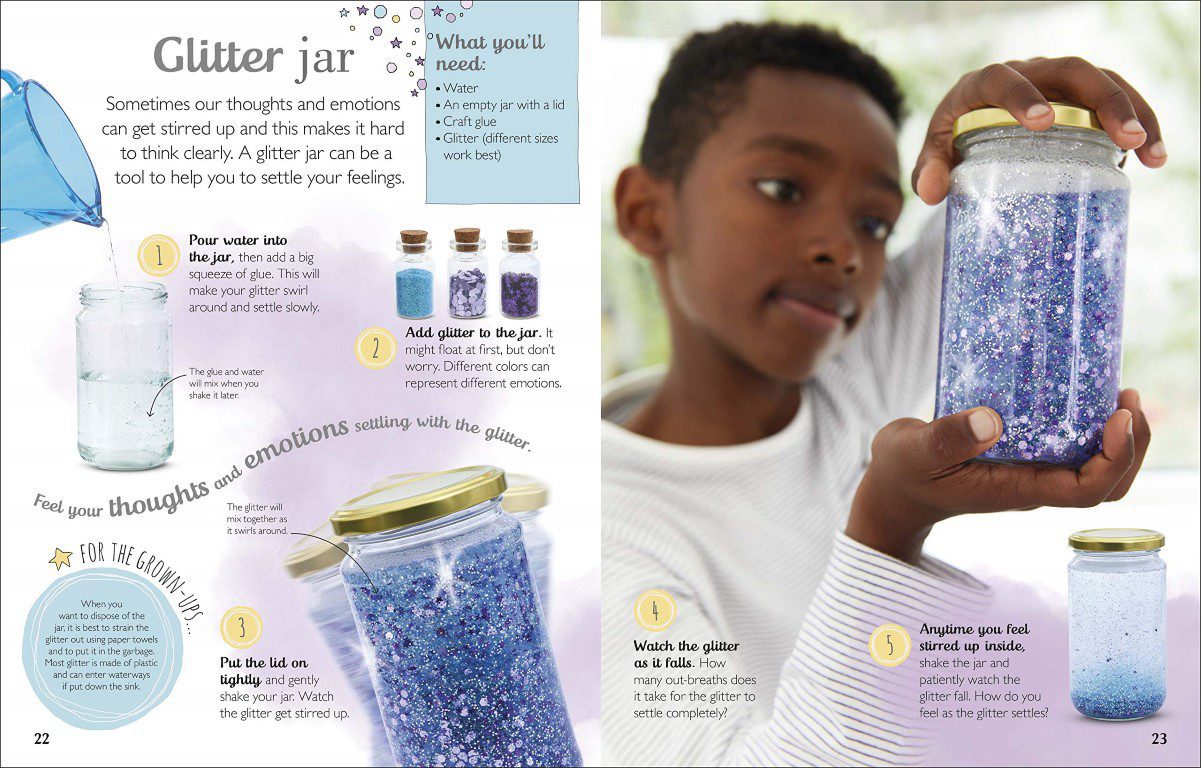
First, in some ways, what is striking is not what’s in the book but what’s missing. There is a notable absence of “touchy-feely” language. Nor is there anything in the book that evokes any “alternative” culture.
This was a conscious decision. Kinder says she “chose not to include the word “meditation,” any Sanskrit terms, and strong encouragement to participate fully.” Instead, she added, and integrated as often as possible, “a sense of choice, the power of noticing, and “adapt for you” language.”
The book has six sections which include Focus, Move, and Reflect. Each includes mindfulness practices as well as practical projects for your child to try, and each is accompanied by a “for grown-ups” note. This layout allows your child to quickly identify mindfulness practices appropriate for their needs at any particular moment.
So, for example, Evey found it easy to find and practice “Elevator Breath” when she found herself “Too full of energy to sleep.”
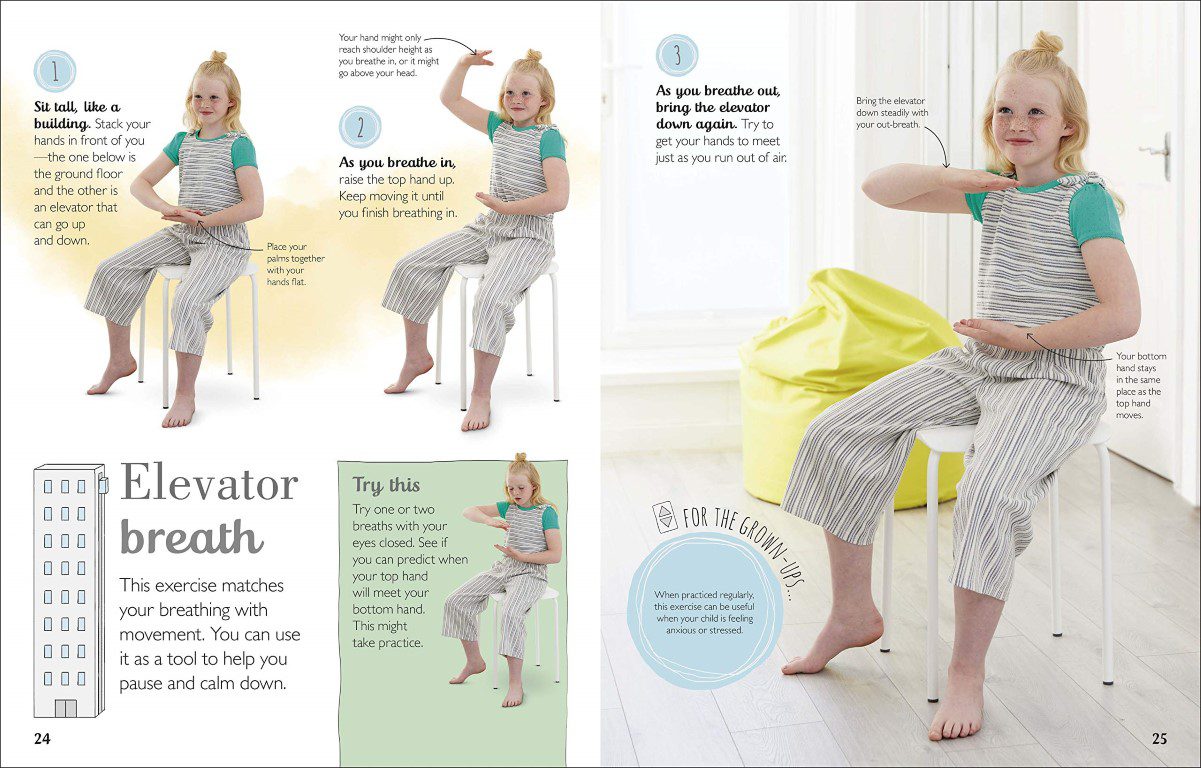
Meanwhile, the activities provide an opportunity to explore the concept of mindfulness in a fun and easily relatable way. For instance, “Energy Slime” not only shares a simple slime recipe, but the pages also talk about squeezing the slime and noticing how it reacts when you use energy to squeeze it and what happens when you release the energy in that squeeze.
What We Thought Of Calm: Mindfulness For Kids
Both Evey & Gabe enjoyed looking through the book with me, highlighting activities they would like to try and practices they would like to explore.
Then, I left them to it.
The clear photographs and simple language make the book easily understood without adult input. This is something in which the kids took great pleasure. They both have the opportunity to feel in control of their exploration of mindfulness, safe in the knowledge that their dad and I are both available if they need a hand.
Gabe asked for help several times, mainly because reading is still a struggle for him, but Evey, as usual, was fiercely independent. I only know she is using Calm: Mindfulness For Kids because I asked if she had any feedback she was willing to share!


The flashcards contain the same words and images as the book. One double-page spread from the book makes each flashcard. One page is on either side of the card. As a result, you won’t miss out by having just one or the other. Gabe preferred the book because he liked the larger format.
Meanwhile, Evey likes that she can carry a single card in her bag or leave one beside her bed. They provide a quick “mindfulness practice refresher” should she need it.
I am happy to recommend both the book and the cards. They are an excellent introduction to mindfulness for kids and adults alike!
The Benefits Of Mindfulness For Kids

When asked about the benefits of mindfulness for kids, Kinder told me, “Consistent mindful practices in the classroom can lead to changes in self-awareness, self-care, emotion regulation, concentration, and mental flexibility. These can all enhance performance in school and out.”
And evidence backs this up.
A significant body of research shows that mindfulness can improve cognitive control and flexibility. It can also reduce stress and anxiety in both adults and children.
However, the effects are more significant for children as it can positively impact brain development.
In particular, mindfulness can help children to:
- Improve levels of attentiveness by teaching them to ignore distractions and focus on the present moment.
- Remain calm during moments of heightened stress or stimulation.
- Enjoy life by reducing their levels of stress and anxiety.
- Be more patient and give greater consideration to the thoughts and feelings of others.
- Succeed at school by increasing the effectiveness of the working memory and improving cognitive control and flexibility.
- Grow into adults who have the tools to cope with life’s challenges.
“Over time, one may notice clearer thoughts, increased emotional regulation, and a sense of balance,” Kinder added.
Calm: Mindfulness For Kids With ADD &/or Autism
As most of you know, two of our sons are autistic. Also, one of our sons and one of our daughters have ADD. I wondered whether there was anything special I should know. For example, were there any adaptations that would help in their use of the book or the practices it contains?
Kinder has seen firsthand how children with ADD or Autism have benefited from mindfulness. She advises, “Start small—one big breath out. The inhale is often stress-inducing. Let kids pick from any page, any practice/activity. Choice, choice, choice.”
Why Kids Need Mindfulness, Now More Than Ever
When I asked about the effects of the covid-19 restrictions on children’s mental health, Kinder shared her recent blog post on that very subject. You can read the entire piece on the Wellness Works In Schools blog. But I’ll repost a little of it here. You can also read more about Adverse Childhood Experiences and their effects elsewhere on RedheadedPatti.com.
“Covid-19 has turned our world upside-down, like when a boat flips in a storm—creating dangers beyond what we could have imagined. It has exposed new challenges across society, within communities, and more pointedly, in homes where children are now sequestered. “
She goes on to say:
“Research on early exposure to hardship became more mainstream in the late 1990s. The original ACE (Adverse Childhood Experiences) study by Anda & Felitti (1998) found a correlation between early (up to age 18) exposure to trauma and the later manifestation of disease, as well as other risk factors.”
“ACEs include abuse, neglect, and dysfunction in the home, with ten indicators within those three themes. And since then, additional factors have emerged to keep up with the times. Social isolation, peer rejection, community violence, bullying, and poverty.”
There is much more to this post, but I’ll jump right to the end:
“The 2020 batch of what might someday be considered (and researched) as ACEs will evolve during and after children’s exposure to trauma in their homes. They may even fit within the acronym of ACEs (At-home Covid Effects). What we, as caring professionals, do now and in the future will directly shape how our society rights itself after this long capsize of Covid-19.”

Where To Find Your Copy Of Calm: Mindfulness For Kids

Paperback, Flashcards & Kindle are all available from Amazon






